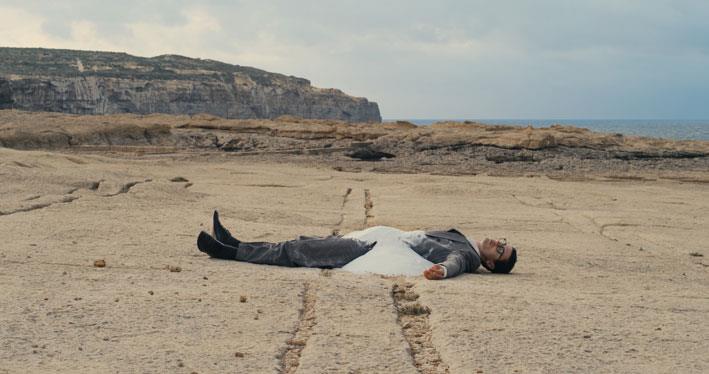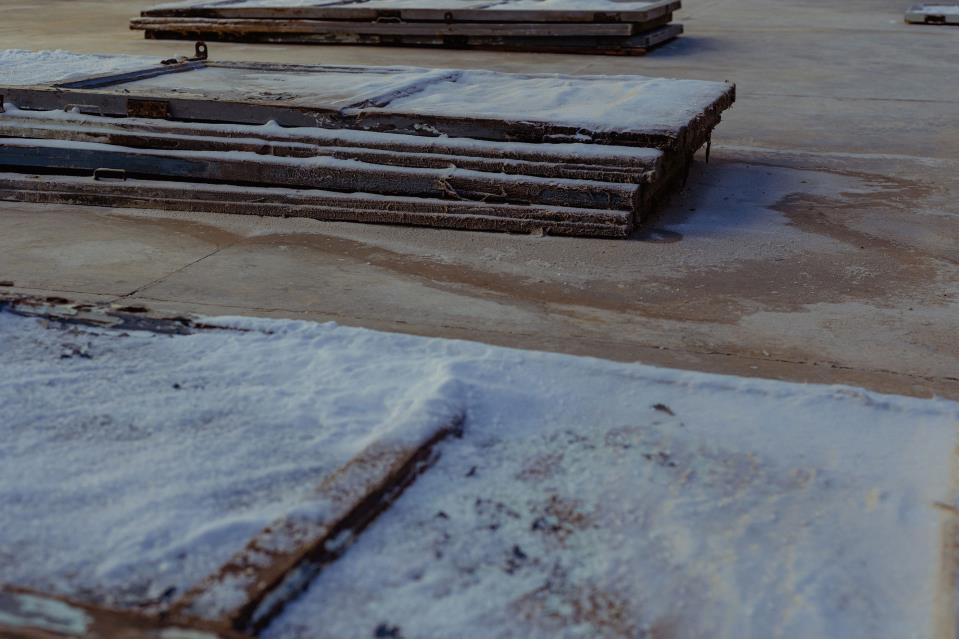A Franco-German alliance for an art biennale is an interesting choice. How did this collaboration come about, and what contributions do you believe it made to the themes selected by the primary curators?
The intention of this alliance at the first biennale is to challenge the age-old idea of borders and to speak about how identity is actually forged at the fringes. Where better to do this than in Malta, where people have come and gone across history to build the ongoing story that we are living even today?
My earliest conversations with Sofia Baldi-Pighi, artistic director of the biennale and curator of its main pavilion, had always been about the sea; how impactful it is on our identity and how many layers it will provide for the biennale. This immediately took me to Mariana Hahn's practice, which I had experienced firsthand in Gozo. As a curator from Malta I can't remove myself from the importance that the sea has within our psyche. Bringing together three nations by our ocean's abundance was clearly an opportunity.

Why Mariana Hahn - and then Simon Riccardi-Zani? What was your thinking and how do their practices bring you to the inaugural biennale in Malta?
Mariana Hahn speaks of material transformation. She uses the elements to transmit stories. The works I saw with salt and copper had immediately resonated with me. Our encounter first on a quarry and then on the saltpans in Gozo had shown me that Malta would provide fertile ground for future work. She chose to talk about vessels of water; how it is carried from one place to another and acts as an archive of stories across time. Simon is a choreographer and dancer who I met through work with ŻfinMalta, the national dance company. Similarly, his Mediterranean roots (Simon is from Nice in France) are the foundation of his practice. He wove bodies, once more a vessel of water, into the pavilion's fabric. Together both artists delivered poetry with the sea as their muse.
The pavilion dialogues with the sea, but it does so using found objects from Malta, among them the doors of the Pixkerija in Valletta. How did these end up making it to the pavilion and what intention do they serve?
The process of creating site-specific art includes long periods of research. On one of the earliest visits Mariana made to Malta we visited the Pixkerija in Valletta and immediately the space became quite focal. This was a place where the land met the sea, and the salt had evaporated to consume the whole space. The fact that the building is soon to be converted, meant that the stories of the place needed to be preserved. Lifting the doors and creating a frugal artwork from them paid homage to the process that has formed them.

The pavilion seeks to join larger discourses about our ocean, in a public programme which has been organised. How do you see that art can approach other disciplines?
We have had the great pleasure of collaborating with the team working on the United Nations Oceans Conference in Nice next year, co-hosted by France and Costa Rica. The pavilion sought to speak about how art can bring new perspectives to science, and how audiences can deal with urgent topics in new ways. I think that siloing disciplines closes doors rather than opens them. Mariana was always interested in different knowledge systems and how we can tap into them to communicate in new ways. I hope the pavilion has done that in some way. Just a few weeks ago we co-curated an Ocean Weekend for ArtExplora together with Sofia and Emma, the curators of the whole biennale. This brough perspectives from artists, scientists, politicians and the public together from different places within one forum.
The contemporary nature of the work is so contemplative, discreet and almost spiritual. What does it seek to say?
Art-making is a complex process. Each artist brings their own method. Mariana is invested in allowing the material and context she works with, to lead the work she creates. Simon works with different devices to create narratives that are open, using movement to create his own language. Away from making explicit statements, their work acts as poetry. The nature of the pavilion is quiet, but only because the sound of the sea is so loud. The artworks allow the salt to speak in the most incredible, performative ways. Visitors understand that the artists are dialoguing first with Fort St Elmo around it, and then the larger contexts of the island, its sea and the Mediterranean. It looks to the political nature of the ocean in its most abstract form, a democratic archive which is constantly being changed, contributed to and renewed.
This pavilion is being presented under the patronage of Her Excellency Agnes Von der Mühll, Ambassador of France in Malta and Her Excellency Tanja Beyer, Ambassador of the Federal Republic of Germany to Malta